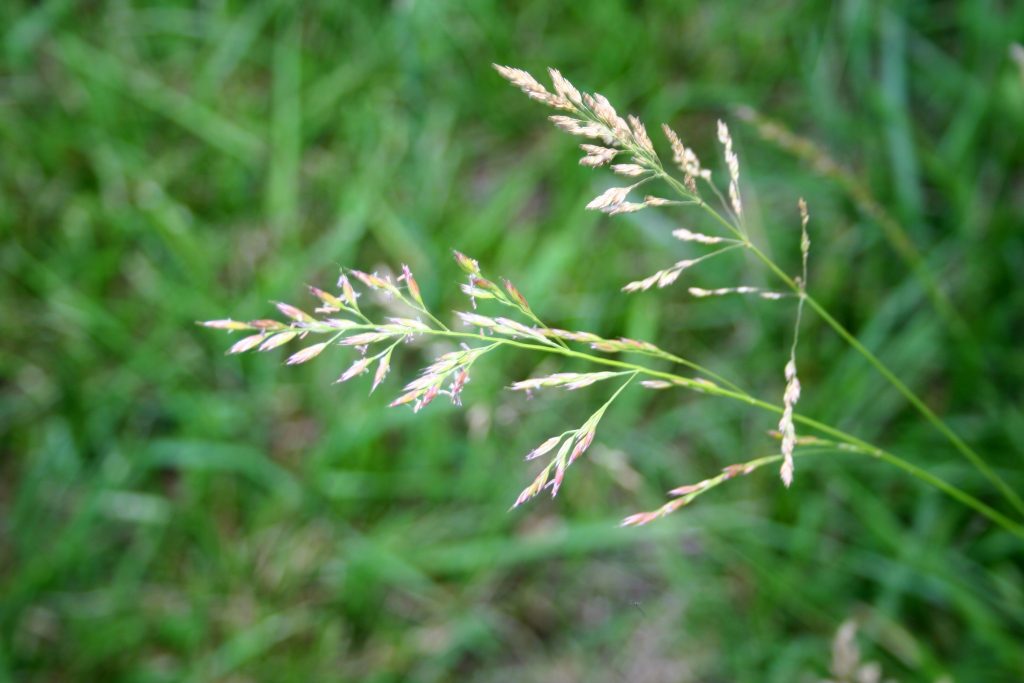Have you ever thought about planting an edible front yard? Last night, I was reading the latest issue of Country Gardens magazine. There was a brief article about a woman who planted grain – yes, grain! – instead of a front lawn.
I immediately thought, “What a great idea.”
And my second thought was, “I’ve got to find this lady and friend her on Facebook” but that’s another story.

Let’s get back to the idea of edible landscapes. Think about your landscape right now. If you’re living in an area like where I grew up on Long Island, your landscape probably consists of:
- A small front yard planted with grass. You have to mow the grass weekly, fertilize it, and water it.
- A few shrubs – “foundation plantings” – near the foundation of the house. Some of these shrubs you may have planted. Most homeowners inherit their shrubs along with the house and don’t know what they have planted there. They just know they have to trim them sometimes, because the branches grow over the windows.
- A tree or two. Maybe you have a tree on your lawn, planted by the town. My childhood town planted trees and chose what tree was in your yard. We had an oak. Neighbors on the street behind us had beautiful old sycamores that shed bark and leaves everywhere. The neighbor next door had a maple tree. One lucky neighbor across the street had a weeping cherry tree. But you’ve probably got a tree or two.
If you’re lucky, you’ve got grass growing in a backyard. Maybe you plant a container or two of tomatoes so you have some delicious fresh tomatoes in summer. But that’s about the extent of it.
Then off you go each week to the grocery store, where you spend $10 or more in fresh produce. Sometimes you buy organic produce and spend more. Most families buy some kind of fresh fruit each week, like bananas or apples, and a head of iceberg lettuce or two. Some families buy more, some less. But you’re probably buying something fresh at the store, along with frozen vegetables.
Now think about it for a minute. Does any of this make sense?
Lawns don’t make sense. Lawns are an English invention. Farmers throughout the ages had grassy paddocks and meadows where they could graze sheep and cattle. In the 1700s, the idea of a lush green “carpet” – a.k.a., a lawn – took hold in the English countryside. Most of us live in areas where we do not have the cool, moist climate perfect for growing lawns. We then spread fertilizer on soil not intended to grow grasses, turn on sprinklers to keep it alive, and spend a fortune to have…what, exactly?

We don’t graze sheep on it. We don’t have a cow. We just look at it on our way out the door to work to earn money to pay the water bill for all that water and electricity used to keep the lawn alive.
Does this make any kind of sense to you?
Edible Landscapes Use Space Wisely
Now let’s take a look at the edible landscape.
We tend to think that vegetables, herbs, and edible fruits should be segregated into neat little garden beds, preferably behind the house somewhere out of sight. The question again is, why?
If you have bright, full sunlight on the front of your home but dark shade in the rear, wouldn’t it make sense to grow vegetables in the FRONT of the house instead of struggling to grow them in the yard?
Many vegetables are also beautiful ornamentals. Who says you have to plant a row of impatiens along the front of your home each spring? Why not plant rainbow Swiss Chard or stripes of red leaf and green leaf lettuce? Or a few herb plants like calendula, catnip, lavender, and basil among the ornamental shrubs?

Prettier than a lawn – and you can eat it, too.
For your shrubs, why not plant blueberry bushes? You get a bush and you get berries. Plus you don’t have to trim the darned things every year!
Some homeowner associations may have rules against planting vegetables on your front lawn, so check any rules, regulations or other laws before you plant. And of course, know before you dig – know where you electric, telephone, and sewer lines are, and if you’re not sure, call the utilities. Don’t dig unless you know what you’re digging up!
There are so many ways to incorporate a few vegetables into your landscape. Doesn’t it make sense to grow local? How much more local can you get then by growing a tomato plant in front of your kitchen window or a few lettuce plants on your front doorstep?
When You Look at How We Live, It’s Crazy
We use fossil fuels to transport crates of produce from South America in the winter…and then we use fossil fuels to ship them from airports and shipyards to warehouses and grocery stores…and then we use fuel to drive to the store to buy them…and then we spend hours working to pay for the privilege of buying out of season produce. None of this makes any sense to me. Why not, instead of mowing the lawn, plant something edible instead?
It’s a thought. But one that won’t go away. Grain. The crazy lady in the magazine planted WHEAT on her front lawn.
I love it. What can you plant to make an edible landscape?




